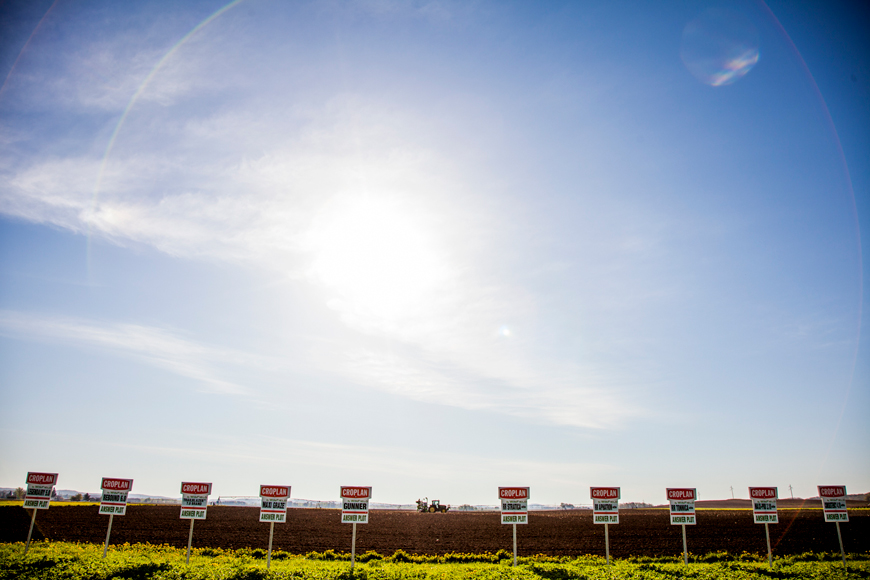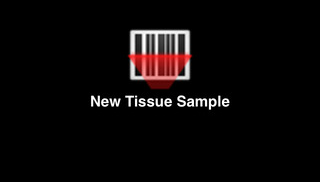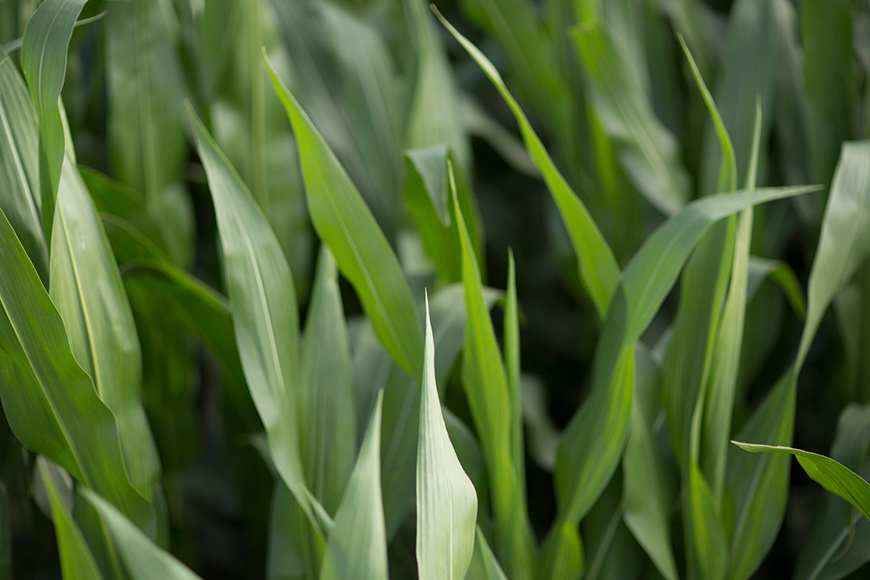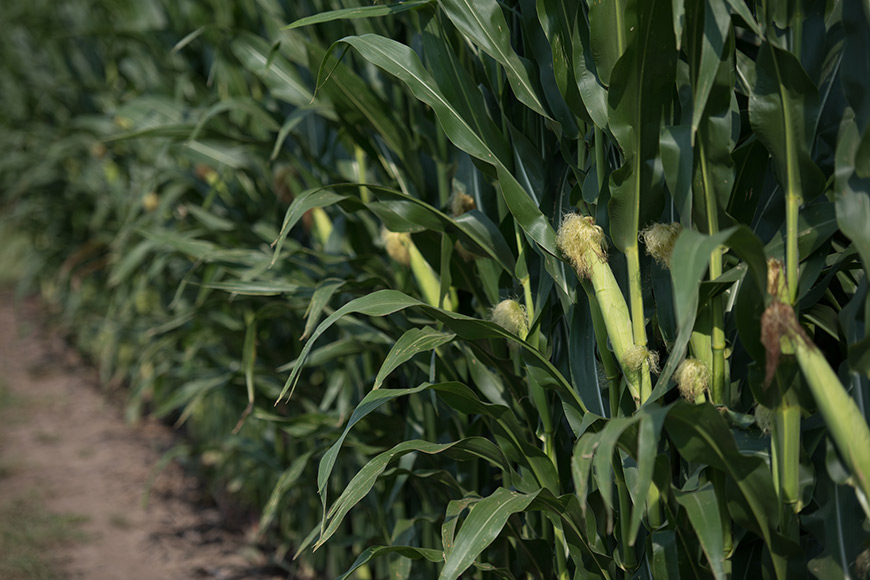8 Tips for Gauging Crop Performance and Harvest Needs
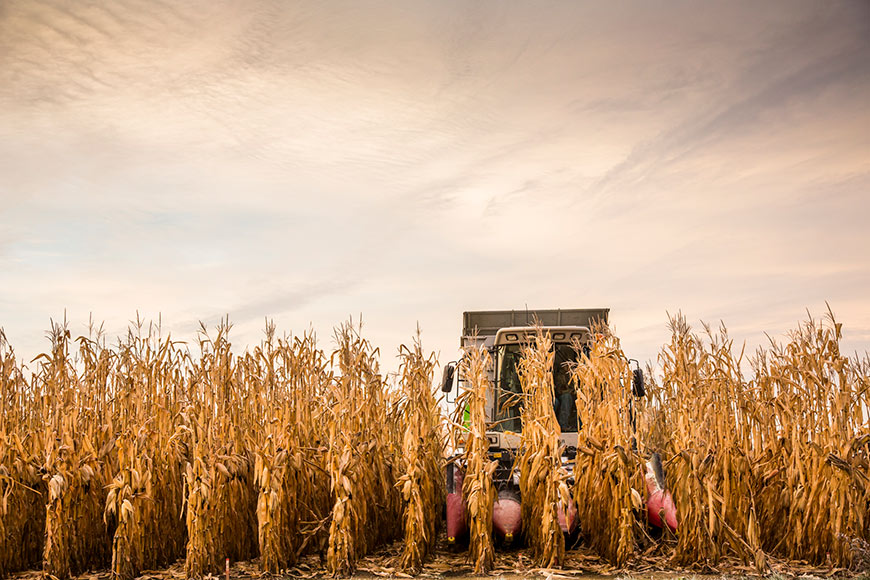
This growing season is one for the record books — and not always in a good way. But as challenging as it’s been, there are still lessons to learn and things you can do to make the most of it.
Many farmers went weeks between plantings, waiting for more favorable weather. Others planted late, switched to hybrids that could mature prior to first frost, planted in wet conditions or didn’t plant some seed at all. It seems as if everything imaginable transpired this spring, making for an interesting year in terms of crop progress.
Given all these unusual factors, how can you gauge the performance of your crops and prepare for as orderly a harvest as possible? Here are some tips.
Many areas have had problems with ear mold in corn plants, which can produce mycotoxins. If there is ear mold, it’s sometimes best to harvest corn wetter than you’d like, to avoid mycotoxin development. Go into your fields, peel back some ears and check for mold. If you do have to harvest your corn wet, dry it down promptly to arrest development of mycotoxins.
If you find lepidopterans, get them identified to understand the threat posed. Are they Western bean cutworms, corn ear worms, European corn borers, armyworms? After they are identified, determine whether you’re seeing some resistance to a particular trait. Of course, insect feeding is an entry point for disease as well. Stay on top of insect scouting to help protect your crop.
You can also prep your grain-receiving facility. If you have your own storage and dryer, go through and do a thorough cleaning, sweeping out bins and getting things cleaned up so you don’t have to worry about pests. This harvest season may be pretty stressful, because activities will be pushed back in many areas. You don’t need one more thing on your late-season to-do list or something to go wrong when you’re trying to get grain in. Get as much housekeeping work done now as you can.
If you and your agronomist have entered planting dates and hybrid information earlier in the season, you can use the R7 Field Forecasting Tool to predict the physiological maturity of your crop and harvest it appropriately. Tech can be used to predict corn drydown and inform your decisions regarding the need for drying equipment and propane.
But we all know the world isn’t perfect. It’s great if we have dry grain, upright stalks and dry fields, but sometimes you can’t avoid going into the field when it’s wet to get your crop out. But you can have a situation that changes the plan — particularly if an early frost threat is looming.
The bottom line is that this year, Mother Nature had her own ideas. So shoot for the best conditions possible and make sure you get your crop out.
All photos are either the property of WinField United or used with permission.
© 2019 WinField United. Important: Before use always read and follow label instructions. Crop performance is dependent on several factors many of which are beyond the control of WinField United, including without limitation, soil type, pest pressures, agronomic practices, and weather conditions. Growers are encouraged to consider data from multiple locations, over multiple years, and be mindful of how such agronomic conditions could impact results. Answer Plot®, CROPLAN®, R7® and WinField® are trademarks of WinField United.
Many farmers went weeks between plantings, waiting for more favorable weather. Others planted late, switched to hybrids that could mature prior to first frost, planted in wet conditions or didn’t plant some seed at all. It seems as if everything imaginable transpired this spring, making for an interesting year in terms of crop progress.
Given all these unusual factors, how can you gauge the performance of your crops and prepare for as orderly a harvest as possible? Here are some tips.
1. Scout for crop disease.
In Michigan, we had tar spot come in late this season. It originally appeared in just two counties and spread to 22 counties over the course of a month. Diseases like this affect stalk integrity because many farmers planted corn in very wet conditions. When planted in wet weather, the likelihood of corn plants developing crown rot is quite high. If you have a foliar disease added to the mix, you can have very little stalk integrity left. My advice is to walk a few of your cornfields and look for both stalk vulnerability and foliar disease pressure.Many areas have had problems with ear mold in corn plants, which can produce mycotoxins. If there is ear mold, it’s sometimes best to harvest corn wetter than you’d like, to avoid mycotoxin development. Go into your fields, peel back some ears and check for mold. If you do have to harvest your corn wet, dry it down promptly to arrest development of mycotoxins.
2. Scout for insects in your crops.
This season, the first-ever documented case of European corn borer resistance to Bt was reported in Canada. So be sure you know what traits you’ve planted and where, and check for resistance.If you find lepidopterans, get them identified to understand the threat posed. Are they Western bean cutworms, corn ear worms, European corn borers, armyworms? After they are identified, determine whether you’re seeing some resistance to a particular trait. Of course, insect feeding is an entry point for disease as well. Stay on top of insect scouting to help protect your crop.
3. Do a crop yield assessment.
Estimate your corn plants per acre by counting the number of harvestable ears in 1/1,000 of an acre (a row length of 17 feet 5 inches for 30-inch rows). Figure your number of kernels per ear by counting rows of kernels around and multiplying by number of kernels per row. Depending on kernel weight, it takes about 75,000 to 95,000 kernels to make a bushel of grain. Estimate your yield by taking harvestable ears multiplied by kernels per ear and then dividing by 75, 85 or 95 depending on whether you expect high or low kernel weight. There are also a number of online corn yield calculators and apps that can assist.4. Prep your machinery and grain storage facility.
Prior to harvest, get your combine and other harvest machinery ready to go. Get information dialed in and calibrate your yield monitor correctly so you get an accurate output about what you’re harvesting. This increases the chance that you collect accurate data that you can use to analyze yield goals for the following year.You can also prep your grain-receiving facility. If you have your own storage and dryer, go through and do a thorough cleaning, sweeping out bins and getting things cleaned up so you don’t have to worry about pests. This harvest season may be pretty stressful, because activities will be pushed back in many areas. You don’t need one more thing on your late-season to-do list or something to go wrong when you’re trying to get grain in. Get as much housekeeping work done now as you can.
5. Use technology to prioritize fields for harvest.
A crop modeling tool like the R7® Field Forecasting Tool can alert you to which fields you may want to scout and/or harvest first. For example, if the tool indicates a particular field is short on nitrogen, that field may be more susceptible to having poor stalk integrity. As a result, you may want to prioritize that field for harvest.If you and your agronomist have entered planting dates and hybrid information earlier in the season, you can use the R7 Field Forecasting Tool to predict the physiological maturity of your crop and harvest it appropriately. Tech can be used to predict corn drydown and inform your decisions regarding the need for drying equipment and propane.
6. Time harvest as well as possible.
In a perfect world, it is ideal to harvest when grain is dry, stalk integrity is good and fields are dry so you can drive equipment across them without compacting the soil.But we all know the world isn’t perfect. It’s great if we have dry grain, upright stalks and dry fields, but sometimes you can’t avoid going into the field when it’s wet to get your crop out. But you can have a situation that changes the plan — particularly if an early frost threat is looming.
The bottom line is that this year, Mother Nature had her own ideas. So shoot for the best conditions possible and make sure you get your crop out.
7. Use caution when making seed choices for 2020.
My advice is to avoid putting a lot of weight on the performance of a particular hybrid in 2019 knowing this was an atypical year. As mentioned earlier, some corn was planted early, some late, some in terrible conditions. Consider basing decisions on regional or manufacturer data, which are going to have more multiyear performance data for some hybrids. For example, the WinField United Answer Plot® program provides data for CROPLAN® seed hybrids and varieties, as well as for seed from other companies.8. Work with your trusted advisor to help get harvest right.
Don’t feel you have to go it alone, especially with the tumultuous year we’ve had. Work with your local agronomist or your locally owned and operated WinField United retailer to use the technology, boots-on-the-ground scouting, and any other tactics or strategies he or she recommends to make your harvest as orderly and economical as possible. To better protect the yield potential you do have, start preparations now to make harvest easier when the time comes and get into the field to harvest when there’s a window of opportunity.All photos are either the property of WinField United or used with permission.
© 2019 WinField United. Important: Before use always read and follow label instructions. Crop performance is dependent on several factors many of which are beyond the control of WinField United, including without limitation, soil type, pest pressures, agronomic practices, and weather conditions. Growers are encouraged to consider data from multiple locations, over multiple years, and be mindful of how such agronomic conditions could impact results. Answer Plot®, CROPLAN®, R7® and WinField® are trademarks of WinField United.


